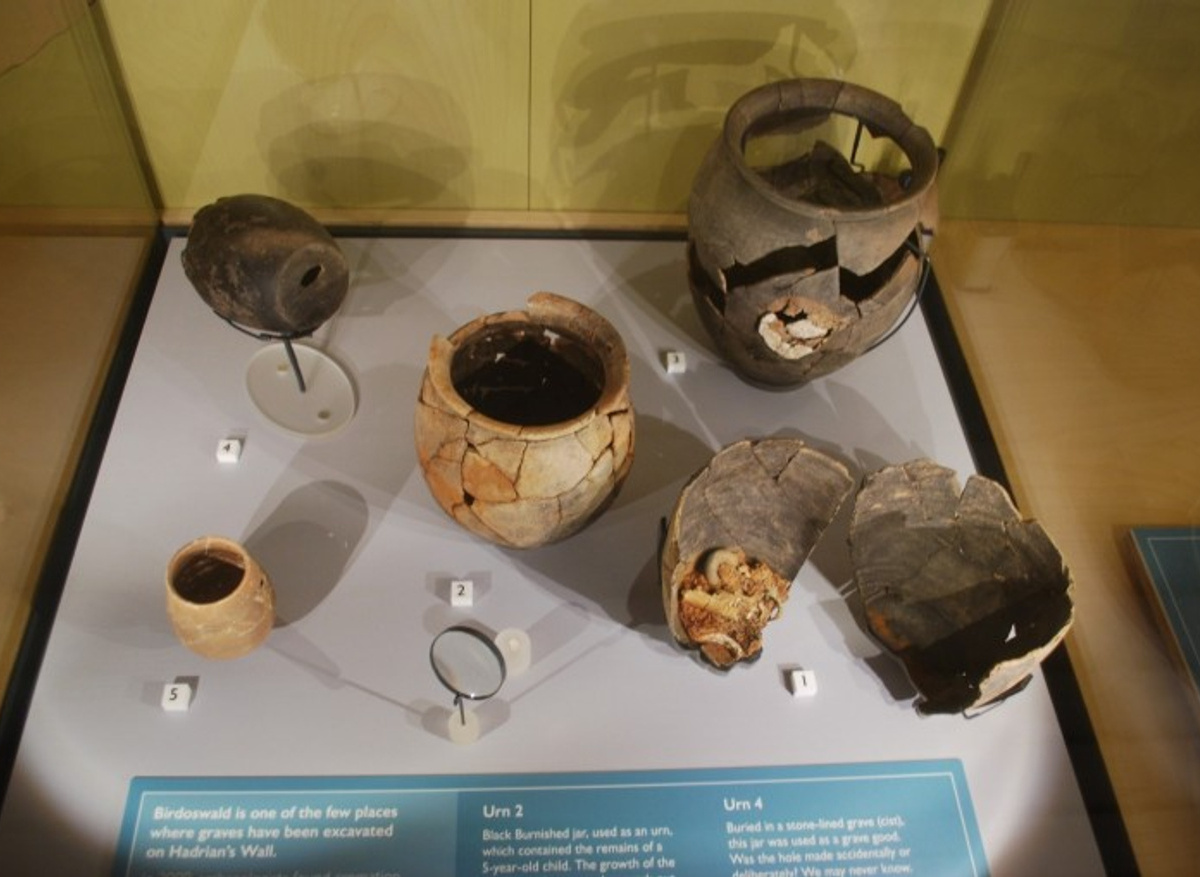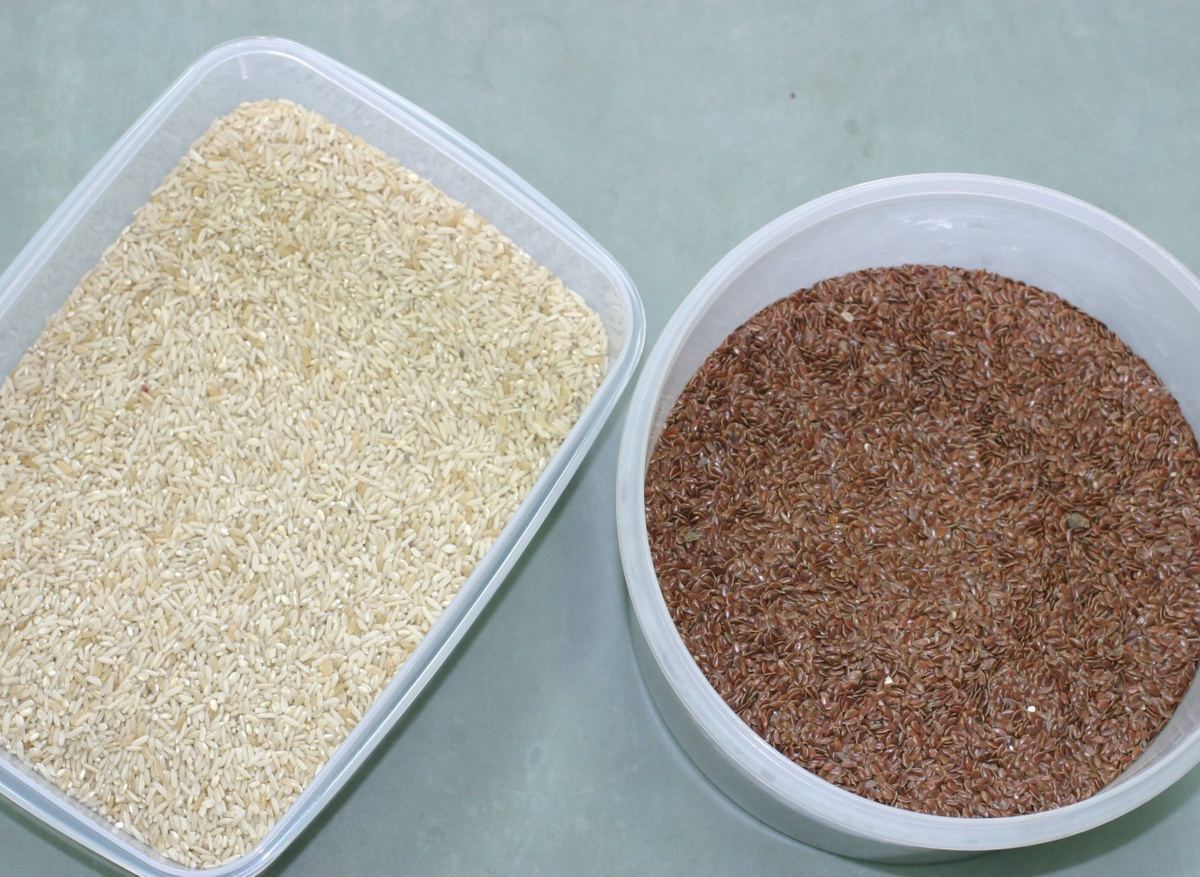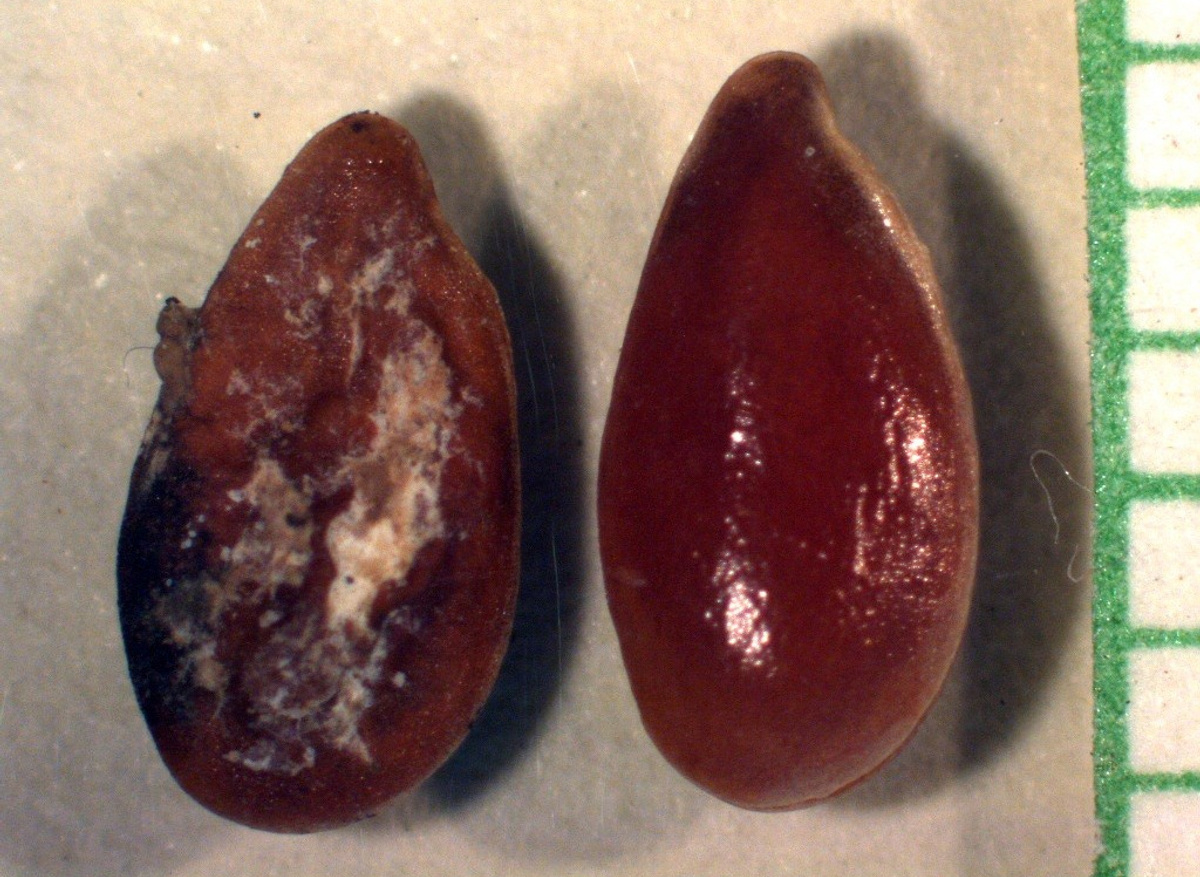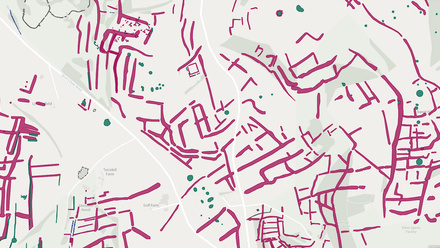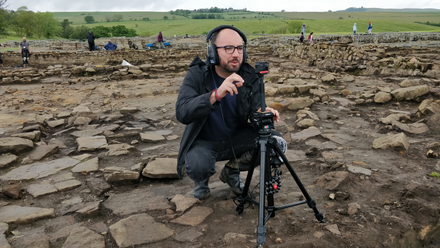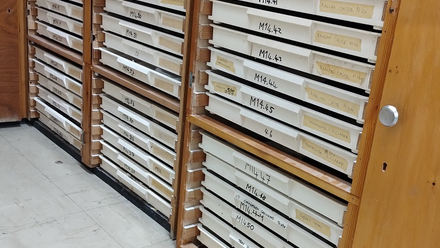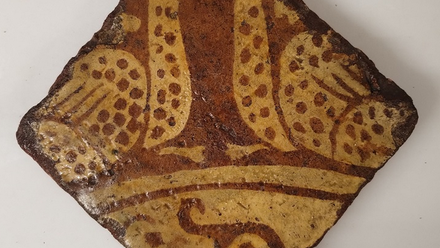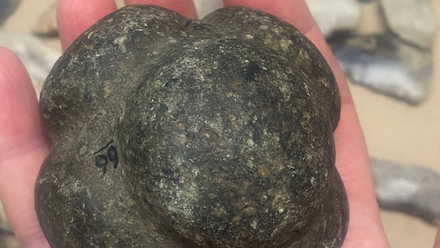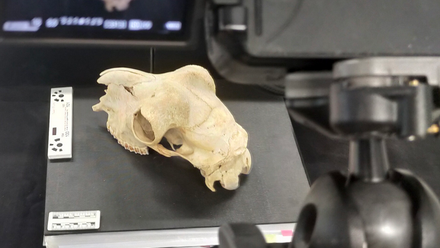So, imagine this: you are sitting in the conservation lab and it’s a fairly normal day. Along comes a colleague from the Environmental Studies Team – the people that look at evidence from past environments or past human activities, in essence bones, cereal grains and pollen. And the conversation starts somewhat like this: “You know the urns you are working on at the moment, we sieved and processed the soil from the fill and came across….” Right, I think I need to give you a bit more background before I can reveal what they have come across.
In 2009 Historic England excavated part of the Roman military cemetery of Hadrian’s Wall at Birdoswald Roman Fort. A brief summary of the excavation has been published by Tony Wilmott (2010). In total 12 vessels, principally cremation urns were block-lifted from site and subsequently x-rayed and micro-excavated at the Historic England conservation laboratories at Fort Cumberland, Portsmouth. The fill of the urns, a mixture of soil, charcoal and cremated bone was passed on to the Environmental Studies team for further work.
So what my archaeobotanist colleague came across, were some un-charred flax seeds. This was really unusual, as all the other material from the urns showed definite evidence of being charred. Neither did the seeds look recent. Were the seeds preserved due to the properties of corroding metal? But no metal objects were found in this particular urn. Could they be Roman? Now this is really exciting for anyone studying grains and seeds. Had we found evidence of a food offering placed in the urn along with the remains of the deceased?
So, now think back: my colleague and I sitting there on this fairly normal day and talking about different possibilities. How had these flax seeds ended up in this cremation vessel and why had they survived? Diet and human waste did feature! And all the time, I had this thought, this niggling feeling, that flax seeds are terribly familiar to me, not just as part of a healthy diet but also in a work-related context as a conservator. But it was one of those annoying thoughts, that just lingers in the background and when you try to concentrate on it, it disappears. And all of a sudden it dawned on me: I refer to flax seeds as linseeds! And now guess what conservators sometimes use to steady uneven objects when working on them? That’s right – trays with linseeds (or rice, lentils or sand for that matter).
So I got the tray out and showed it to my colleague and we concluded that the conservator at the time, was probably resting the block-lifted pot on a bed of flax seeds and just a few seeds ended up in the fill of the urn, where they stayed until the sample was processed and the contents were examined. And this is when the flax seeds were found.
One of the flax seeds found in the soil from the fill of urn 33517 (see image of seeds, seed on the left of image), compared to a flax seed from the tray (see image of seeds, seed on the right of image).
This is however not where the story ends. We did go the extra mile of C14 dating some. Not just because we can - no, because we needed to be sure. After all we could have re-written Roman funerary practice…
So some seeds were sent to Scottish Universities Environmental Research Centre (SUERC) for radiocarbon dating. Here they were washed in hot acid to make sure they were really clean, combusted to CO2 and then made into graphite (what had these poor seeds done to deserve this!). But this was only the start: the graphite was then bombarded by ions fired at it from a gun and the resulting carbon atoms produced accelerated around an accelerator mass spectrometer (the clue is in the name). Finally, after passing through a magnetic field the three isotopes of carbon 14C, 13C and 12C came to rest (what a journey) and we have an estimate of the amount of 14C the seeds contained. As the amount of 14C in the atmosphere has not remained constant the radiocarbon measurement was then calibrated against a calibration curve made up of radiocarbon ages on samples of known calendar date. Our seeds most likely date from the first half of the 1990s. In conclusion this means we won’t be re-writing Roman funerary practice.
But a word of caution: despite the light-hearted tone in this contribution, there is obviously a serious message here as well. It is fairly easy for some brown seeds to get mixed up with brown soil. But the person processing and analysing this brown soil, may not be aware of the conservator having used flax seeds, rice or lentils as a bed to steady an otherwise wobbly pot or block-lift! And we did not record the use of a flax seed tray in our conservation report…. Also down the line if starch grain or lipid analysis was carried out on this vessel what would the results be…
Angela Middleton holds a degree in archaeological conservation from the University of Applied Sciences in Berlin and an MSc in Maritime Conservation Science from the University of Portsmouth. She has worked for the Newport Medieval Ship Project and the Michael Faraday Museum of the Royal Institution before joining Historic England as an Archaeological Conservator in 2007. Here she is responsible to advise on and undertake research and investigative conservation on material retrieved from land and marine sites. She has a special interest in the conservation of waterlogged organic materials. She has been working on material recovered from England’s protected wreck sites, most notably the London and the Rooswijk. Gill Campbell has been working as an environmental archaeologist for over 35 years and started digging nearly 40 years ago. She took her first degree in Archaeology at the Institute of Archaeology in London (BS. Hons.) and an MSc at the University of Birmingham in the Utilisation and Conservation of Plant Genetic Resources. This degree taught her a lot about genetics, plant breeding and how to describe canteen food in Latin to an international audience. She is chair of the Association for Environmental Archaeology (AEA http://envarch.net/) and a member of Forum for Information Standards in Heritage (FISH) terminology Working Group with responsibility for the Archaeological Sciences Thesaurus http://www.heritage-standards.org.uk/fish-vocabularies/ Peter Marshall has worked as an archaeologist since the late 1980s, initially as a circuit digger and following University as a scientific dating specialist. My work encompasses the complete 900,000 years of the human occupation of England. Further details of the many exciting sites I have had a hand in investigating can be found at https://www.researchgate.net/profile/Peter-Marshall-8
References
Wilmott, T 2010 Birdoswald Roman cemetery, Research News 14, 16-19 (https://content.historicengland.org.uk/images-books/publications/research-news-14/researchnews14.pdf/) [accessed 15/09/2021]
Contact details
Angela Middleton
Historic England

